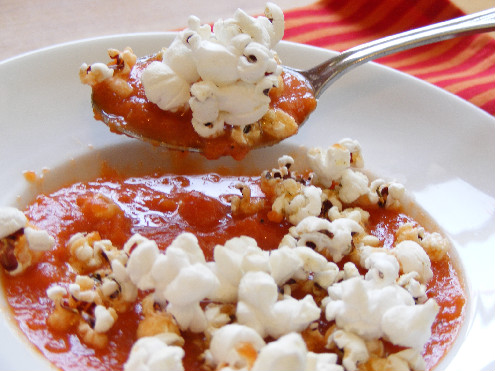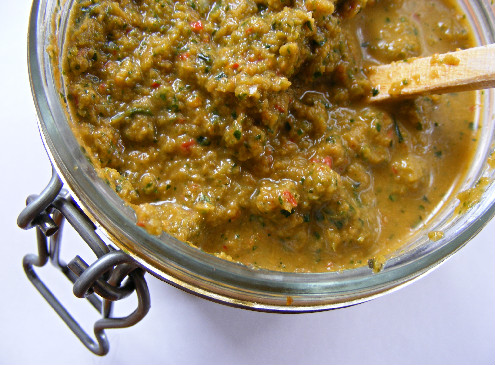Popcorn: Rosemary-Garlic Popcorn – Snack or Croutons
Friday, May 7th, 2010The modern American palate considers popcorn snack food. However, the other night I watched a flick where the leading lady fed her family popcorn for breakfast. In the movie, she was broke. Nonetheless, it was way out of the box for me. Popcorn cereal?
It may seem kitschy now, but decades ago, popcorn cereal was avant-garde.
According to the history of popcorn cookery, popcorn was on the verge of becoming a staple ingredient in the early 1900s – commonly eaten at every meal. The upper and middle-class are credited with developing this broader recipe repertoire, which was later adopted by the less affluent and farmers.
Besides cereal (cold and hot), popcorn was used to make puddings, bread, popcorn balls, and stuffing.
Popcorn was also used as a replacement for croutons and crackers. The crispy texture was a perfect garnish for soup and salads.
Like most of you, I fall in line with the majority of people who snack on popcorn – usually just salted and buttered. But, with just a little more effort I’ve created an herbed popcorn that can be eaten as regular snack food or as a topper for soup and salad.
The recipe below for rosemary-garlic popcorn is a lovely addition to a hot bowl of tomato soup. Add the popcorn to your dish just before eating, especially with soups.
The recipe is flexible – your favorite herbs and seasoning could be substituted. How about garlic and chive, basil and sun-dried tomato, or chile and lime? At your local spice store there is a plethora of seasoning mixes that could be used and some include powdered cheese – which makes for even tastier popcorn croutons.
If you eat herbed popcorn or use popcorn for something other than a snack, please share in the comments. I’d love to hear from you.
Tidbits on Popcorn:
- Popcorn consumption rose in the United States after World War II, when grains were sent to Europe.
- The precursor to today’s microwave popcorn evolved from popping the entire cob with kernels in an early model of the “microwave oven” around 1945.
- Popped popcorn is a very profitable business product. It is bought by weight and sold by volume. The aroma of freshly popped popcorn significantly induces sales at movie theatres. Therefore, they regularly pop it.
Source: Popped Culture: A Social History of Popcorn in America by Andrew F. Smith; Corn: Meals & More by Olwen Woodier; Crazy for Corn by Betty Fussell.







